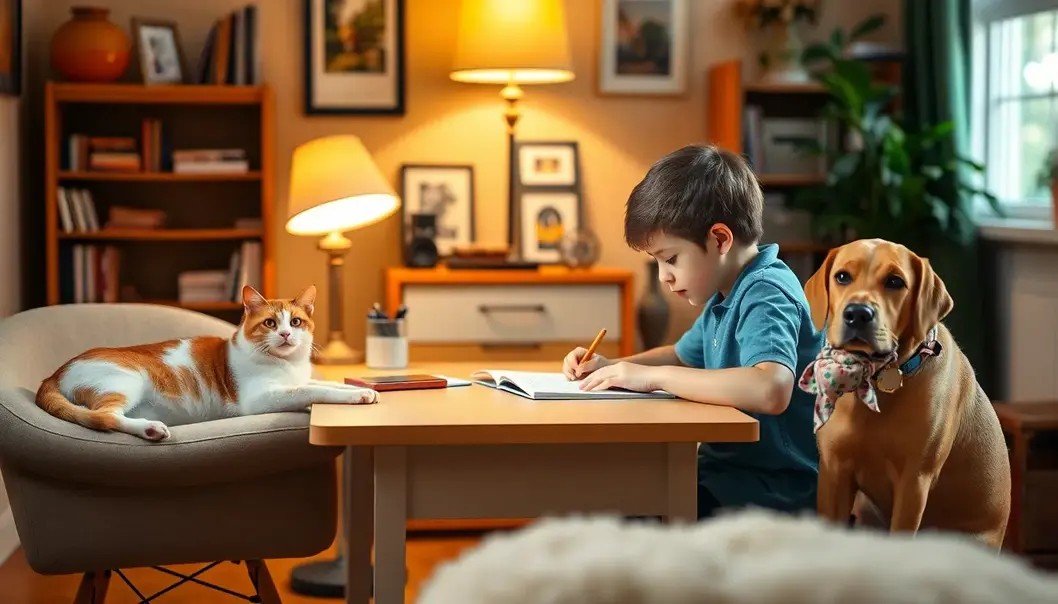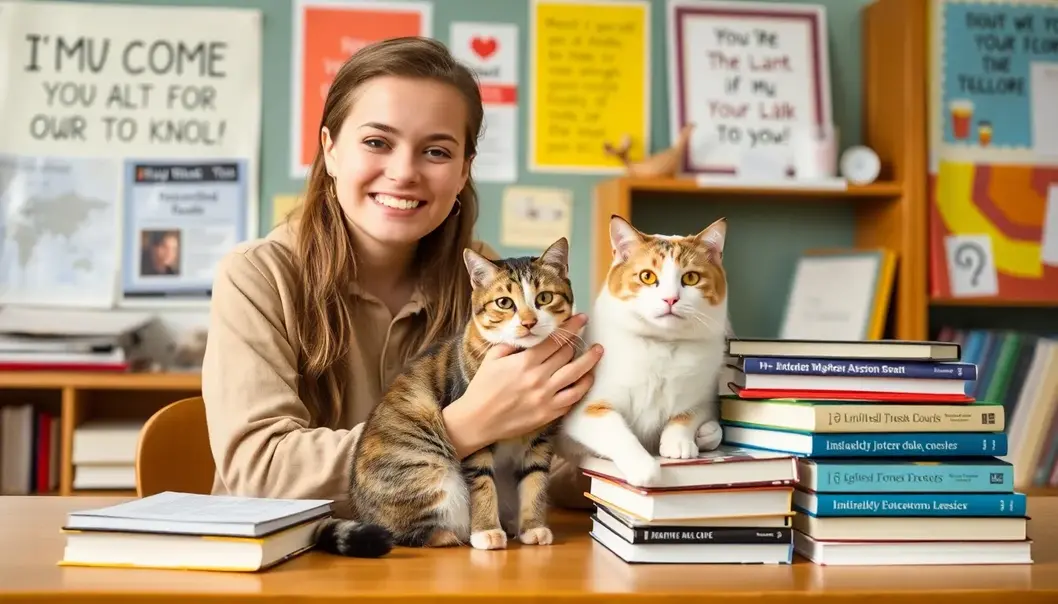As a pet owner, you understand the importance of nurturing curiosity and providing a stimulating environment for your beloved animals. Similarly, when it comes to high school students, developing critical thinking skills is essential for their growth. Like pets learning from their surroundings, young minds flourish when encouraged to observe, question, and analyze various situations. In this guide, we’ll delve into the parallels between caring for pets and fostering critical thinking in high school, helping students gain the skills needed for future success. Whether you’re guiding a curious cat or a questioning teen, similar strategies apply. Embark on this journey to discover how pet-friendly principles can cultivate keen, analytical thinkers.
Creating a Safe and Stimulating Environment

The parallels between nurturing pets and nurturing young minds become evident when considering the environments we create for them. Just as a pet requires a space that is both safe and stimulating to thrive, high school students need a similar setting to foster critical thinking and curiosity.
A pet’s environment often includes familiar comforts and engaging stimuli that encourage exploration. Similarly, educational environments should be designed to offer safety and stimulation. Safety, in this context, is multidimensional. It encompasses not only the physical safety of spaces free from hazards but also emotional safety, where students feel valued and respected. In a classroom, this means creating an atmosphere where students can voice opinions without fear of ridicule.
Stimulating environments, whether for pets or students, incorporate sensory elements that spark curiosity. For pets, this might include toys that challenge their instincts or spaces filled with various textures and scents to explore. Translating this to a classroom, think of colorful visuals, varied textures, and interactive materials that invite students to engage. Such elements can transform passive observations into active learning experiences.
Consider how lighting affects perception and mood. Natural light can invigorate pets and students alike, enhancing alertness and mood. Schools designed with ample daylight and invigorating colors mimic the natural world, prompting a similar sense of exploration found in pets.
An outdoor space can also serve dual purposes. For pets, time outside means exploration, exercise, and new sensory experiences. Schools mirrored with outdoor learning spaces or garden projects allow students to explore beyond the traditional four walls, echoing the stimulation of the natural environment pets enjoy.
To create these environments, collaborate with students, just as we consider a pet’s preferences. Surveys can identify what makes students feel safest and most inspired. Personalizing environments with student-created art or decor echoes the personal touches we add for pets.
Ultimately, environments that balance safety with stimulation foster confidence and curiosity. This echoes through both pet training and academic learning, showing that the right atmosphere not only enhances comfort but also unlocks potential growth. While the settings differ—one at home, the other at school—the principles of safety and stimulation converge, indicating their universal application in nurturing developing minds. For further exploration into creating rewarding environments for pets, consider visiting this detailed guide.
Encouraging Curiosity and Exploration

Fostering curiosity is a cornerstone of critical thinking, whether in the classroom or at home with our pets. Curiosity drives exploration, prompting inquiries and discoveries about the world, thus enhancing problem-solving capabilities. Encouraging both high school students and pets to explore their environments opens pathways to profound learning experiences.
Begin fostering curiosity by introducing open-ended questions and challenges. These stimulate critical thinking by requiring individuals to consider multiple perspectives and solutions. In a classroom, replace yes-or-no questions with prompts like, “What do you think might happen if…?” This mirrors how pet owners can engage with their furry friends—presenting varied stimuli or toys that invite creative interaction.
Creating environments with diverse materials is another way to nurture exploration. In education, this might involve a variety of texts, tools, or technologies that encourage hands-on learning. For pets, this could mean providing different textures and smells through toys or allowing for safe outdoor exploration. By encouraging students to investigate various resources, and animals to interact with unique environments, we pave the way for broadened understanding and inquiry.
Exploratory activities can range from guided projects to unstructured play. In schools, project-based learning not only teaches academic content but also cultivates independence and resourcefulness. For pets, activities like agility courses or treasure hunts stimulate their innate curiosity. These parallels underscore how exploration and play, driven by curiosity, enhance brain development in both humans and animals.
The link between confidence and exploratory behavior is significant. Both students and pets thrive when they feel secure exploring boundaries. Cultivating trust—whether through a teacher-student relationship or pet-owner bond—is crucial. Students are more likely to ask questions and explore new concepts in a supportive atmosphere, just as pets are more willing to engage with the world when they feel safe.
According to various pet training principles, positive reinforcement plays a vital role in fostering exploratory behavior. Rewarding both pets and students for their inquisitiveness encourages a continued pursuit of knowledge. This could be as simple as verbal praise or a treat, reinforcing that their courage to explore is valued.
By subtly integrating these strategies into daily routines, we can nurture a love for exploration in both high school students and pets. Encouraging curiosity not only builds critical thinking skills but also joy and enthusiasm for learning. It’s a reminder that sometimes, the questions themselves are just as important as the answers.
Final words
Developing critical thinking in high school can be wonderfully guided by principles familiar to pet owners. By fostering a stimulating environment and encouraging curiosity, we set students on paths to become insightful, analytical thinkers. As you nurture your pets, consider how these daily practices can similarly support the young minds of students around you. Bridging these aspects not only benefits personal growth but also enriches communal development.
Join our community of pet-loving educators and receive more tips on enhancing critical thinking skills in students.
Learn more: https://peteducatorscommunity.com
About us
Pet Educators Community offers resources and strategies for educators to integrate pet care principles into teaching critical thinking skills, creating enriching learning environments.

